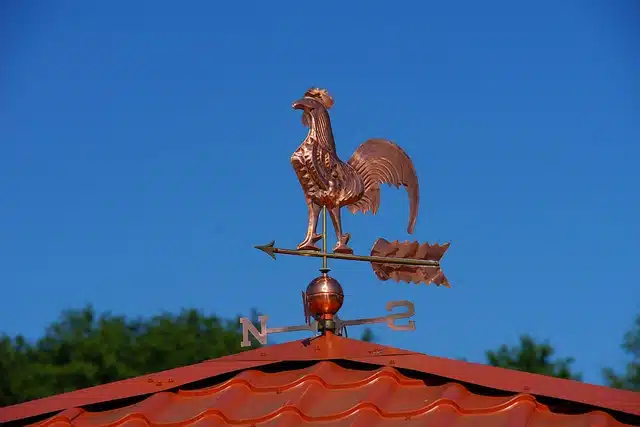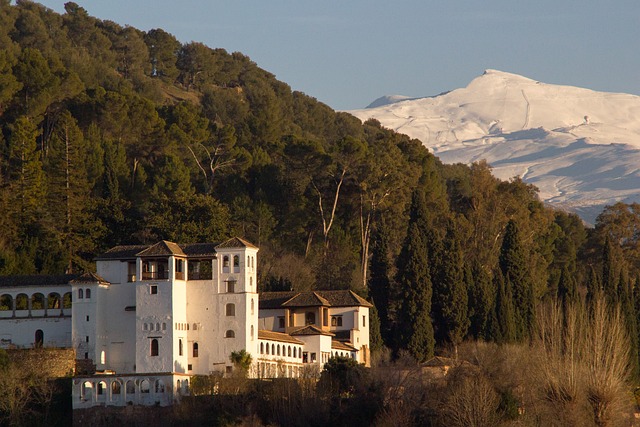
A weather vane is a device that signals the direction of the wind.
A weather vane is an object that is installed on the top of a construction so that, when the wind blows, it can rotate and indicate its direction . It is common for the weathervane to be in the shape of an animal, such as a rooster or a horse , although it can also be an arrow or anything else.
Weathervanes, therefore, are devices that feature a pointer to reveal the direction of the wind. This marker is usually linked to a cross that shows the cardinal points. Thanks to its mechanism, the different pieces of the vane rotate when they receive the action of the wind, showing its direction.
In order for them to fulfill their function, the weather vanes must be installed as high as possible . In this way, trees and buildings are prevented from altering the real direction of the wind. That is why weather vanes usually appear on the roofs of houses or on the terraces of buildings .
Origin of the weathervane
Although the exact origin of the weather vane is not known, it is known that this instrument has been among the creations of human beings for more than two millennia; A clear example is found in the Roman Agora of Athens, built between 19 and 11 BC. C., where a rooster-shaped weather vane was placed.
By extension to this meaning, the term weathervane is also used to name a subject who tends to change their thoughts, behavior or attitude frequently . As you can see, this meaning works by analogy to the constant movement of a weather vane, which changes its position in the face of any wind.
Suppose that a politician ran, in 1998 , as a candidate for president of the Liberal Party . Four years later, the same leader runs as a candidate for the Conservative Party . In 2006 , the same politician announced his incorporation to the Democratic Progressive Party . Because of all these changes in less than a decade, many analysts describe the man in question as a weather vane .

Pico del Veleta is located in Spain.
A Spanish mountain
In Spain we find the Pico del Veleta , the fourth highest in the country and the second in its mountain range , only surpassed by Teide , in Tenerife ; Mulhacén , in Sierra Nevada ; and Aneto , in the Pyrenees . The Pico del Veleta rises to 3,395.68 meters above sea level and is located in Granada , one of the most important Andalusian provinces internationally, partly because it was the birthplace of one of the most significant poets in history. , Federico García Lorca, as well as the land where his life was taken in such a tragic and unjust way.
Despite what it may seem, the name of this peak does not refer to the aforementioned instrument for calculating the direction of the wind, but rather comes from the Arabic term balata , which can be defined as "balate, slash, cut", and refers to to the marked pits, some with slopes of up to 500 meters, which can be seen on three of their faces. Furthermore, it is important to understand that this word is masculine, unlike the previous one ( El Veleta).
Characteristics of Pico del Veleta
Among the most interesting features of Pico del Veleta we find an area of permafrost with fossil ice that seems to come from 13,000 years ago, when the last ice age occurred. It is worth mentioning that permafrost zones are permanently frozen, although not always with ice or snow.
Pico del Veleta is an ideal place for lovers of downhill, extreme and cross-country skiing, hiking, climbing and mountaineering, thanks to having the highest slopes in the entire Sierra Nevada mountain range, some areas of snow and other rock. In addition, every year a marathon is held at the beginning of August that ends in Puerto del Veleta .
